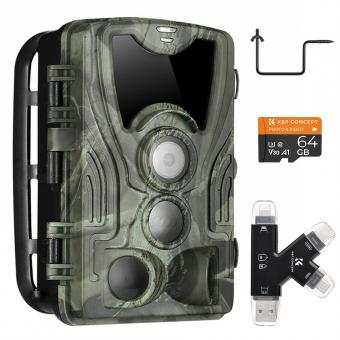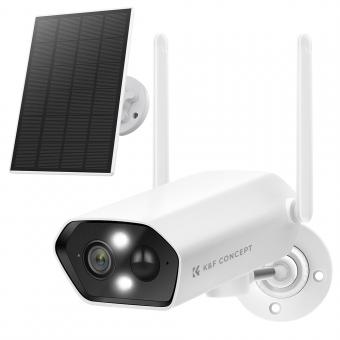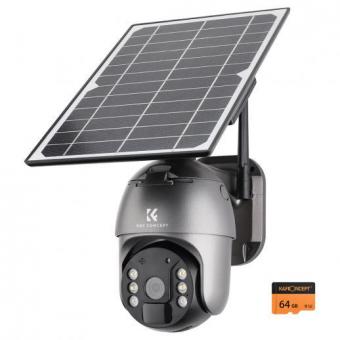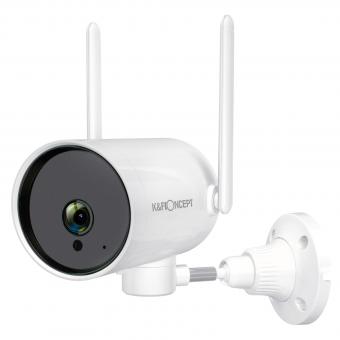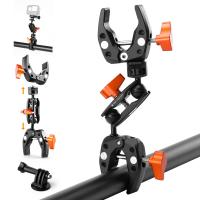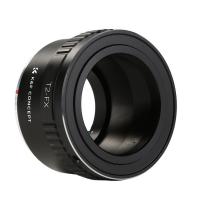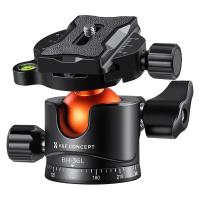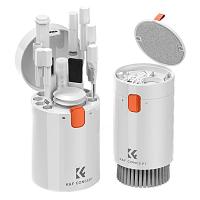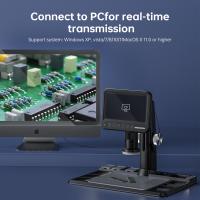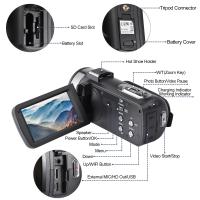How To Connect Security Camera Dvr To Wifi ?
To connect a security camera DVR to WiFi, you need to follow these steps:
1. Ensure that your DVR supports WiFi connectivity. Not all DVRs have built-in WiFi capabilities, so check the specifications or user manual of your DVR to confirm.
2. Connect your DVR to your router using an Ethernet cable. This is necessary for the initial setup and configuration.
3. Access the DVR's settings menu through a connected monitor or TV. Use the provided remote control or front panel buttons to navigate.
4. Locate the network settings or WiFi setup option in the DVR's menu. This may vary depending on the brand and model of your DVR.
5. Select the WiFi network you want to connect to from the available list. Enter the network password if prompted.
6. Once connected, the DVR should obtain an IP address from your router. Take note of this IP address for future access.
7. Disconnect the Ethernet cable from the DVR and restart it. It should now be connected to the WiFi network.
8. To access the DVR remotely, you may need to configure port forwarding on your router and set up a dynamic DNS service if your ISP assigns a dynamic IP address.
Remember to consult the user manual or manufacturer's website for specific instructions related to your DVR model.
1、 Check compatibility of DVR with Wi-Fi connectivity options.
To connect a security camera DVR to Wi-Fi, you need to follow a few steps. However, before proceeding, it is important to check the compatibility of your DVR with Wi-Fi connectivity options. Not all DVRs have built-in Wi-Fi capabilities, so it is crucial to ensure that your device supports wireless connectivity.
If your DVR is Wi-Fi compatible, here is a general guide on how to connect it to your Wi-Fi network:
1. Connect the DVR to your router: Use an Ethernet cable to connect the DVR to your router. This will establish a wired connection between the two devices.
2. Access the DVR's settings: Use a computer or smartphone to access the DVR's settings. This can usually be done by typing the DVR's IP address into a web browser.
3. Configure the network settings: Within the DVR's settings, navigate to the network configuration section. Here, you will need to enter your Wi-Fi network's SSID (name) and password. Save the settings.
4. Disconnect the Ethernet cable: Once the Wi-Fi settings are saved, disconnect the Ethernet cable from the DVR and router.
5. Test the connection: Restart the DVR and ensure that it successfully connects to your Wi-Fi network. You may need to wait a few minutes for the connection to establish.
It is worth noting that the specific steps may vary depending on the brand and model of your DVR. Therefore, it is recommended to consult the user manual or manufacturer's website for detailed instructions.
As technology advances, newer DVR models may offer more streamlined Wi-Fi connectivity options. Some may even have built-in Wi-Fi capabilities, eliminating the need for an Ethernet connection. Always stay updated with the latest information and advancements in DVR technology to make the most of your security system.

2、 Connect DVR to Wi-Fi network using Ethernet cable.
To connect a security camera DVR to Wi-Fi, you can follow these steps:
1. Check if your DVR supports Wi-Fi connectivity: Not all DVRs have built-in Wi-Fi capabilities. Ensure that your DVR has Wi-Fi functionality before attempting to connect it to your network.
2. Connect the DVR to your router using an Ethernet cable: This is the most reliable and recommended method. Connect one end of the Ethernet cable to the DVR's Ethernet port and the other end to an available port on your router.
3. Configure the DVR's network settings: Access the DVR's settings menu and navigate to the network settings. Set the network type to "Wired" or "Ethernet" and ensure that the DVR is set to obtain an IP address automatically (DHCP).
4. Connect the DVR to a power source: Plug the DVR into a power outlet and turn it on. Wait for it to boot up and establish a connection with your router.
5. Test the connection: Once the DVR is connected to the router, check if it has successfully obtained an IP address. You can do this by accessing the network settings on the DVR or checking your router's connected devices list.
6. Access the DVR remotely: If your DVR supports remote viewing, you can now access it using a smartphone, tablet, or computer connected to the same Wi-Fi network. Install the necessary app or software provided by the DVR manufacturer and follow the instructions to connect to your DVR.
It's worth noting that connecting your DVR to Wi-Fi using an Ethernet cable is generally more stable and reliable than relying solely on a wireless connection. However, if your DVR supports Wi-Fi, you can also try connecting it directly to your Wi-Fi network using the DVR's network settings menu.

3、 Configure DVR settings for Wi-Fi connection.
To connect a security camera DVR to Wi-Fi, you need to configure the DVR settings for a wireless connection. Here is a step-by-step guide on how to do it:
1. Check compatibility: Ensure that your DVR supports Wi-Fi connectivity. Some older models may not have this feature.
2. Connect the DVR to the router: Use an Ethernet cable to connect the DVR to your router. This will allow you to access the DVR's settings through a web browser on your computer.
3. Access the DVR settings: Open a web browser on your computer and enter the IP address of the DVR. This information can usually be found in the DVR's user manual. Log in to the DVR's interface using the provided username and password.
4. Enable Wi-Fi: In the DVR settings, navigate to the network or Wi-Fi section. Look for an option to enable Wi-Fi connectivity. Enable it and save the settings.
5. Scan for Wi-Fi networks: Once Wi-Fi is enabled, the DVR will scan for available networks. Select your Wi-Fi network from the list and enter the password if required.
6. Test the connection: After entering the Wi-Fi credentials, the DVR will attempt to connect to the network. Wait for a few moments to see if the connection is successful. If it fails, double-check the network name and password.
7. Disconnect the Ethernet cable: If the Wi-Fi connection is successful, you can disconnect the Ethernet cable from the DVR and the router.
8. Monitor the DVR remotely: With the DVR connected to Wi-Fi, you can now access the camera feeds remotely using a smartphone, tablet, or computer. Install the manufacturer's app or software and follow the instructions to connect to the DVR.
It's important to note that the steps may vary slightly depending on the DVR model and manufacturer. Always refer to the user manual for specific instructions.
In recent years, some DVRs have started offering easier Wi-Fi setup options, such as QR code scanning or automatic network detection. These features simplify the process and make it more user-friendly. However, it's still essential to follow the manufacturer's instructions for your specific DVR model.
Additionally, ensure that your Wi-Fi network has a strong signal in the area where the DVR is located. Weak Wi-Fi signals can cause connection issues and affect the video quality. Consider using Wi-Fi range extenders or positioning the router closer to the DVR for better signal strength.
By following these steps, you can successfully connect your security camera DVR to Wi-Fi and enjoy remote access to your camera feeds.

4、 Connect DVR to Wi-Fi network using wireless adapter.
To connect a security camera DVR to Wi-Fi, you can use a wireless adapter. This allows you to access your security camera footage remotely and eliminates the need for a wired connection. Here's a step-by-step guide on how to connect your DVR to a Wi-Fi network using a wireless adapter:
1. Check compatibility: Ensure that your DVR is compatible with a wireless adapter. Some DVRs have built-in Wi-Fi capabilities, while others require an external adapter. Consult your DVR's user manual or manufacturer's website for compatibility information.
2. Purchase a wireless adapter: If your DVR doesn't have built-in Wi-Fi, you'll need to purchase a compatible wireless adapter. Make sure it supports the same Wi-Fi standard as your router (e.g., 802.11n or 802.11ac).
3. Install the wireless adapter: Connect the wireless adapter to the USB port on your DVR. Follow the manufacturer's instructions for installation, which may involve installing drivers or software.
4. Configure the wireless settings: Access your DVR's settings menu and navigate to the network settings. Select the Wi-Fi option and scan for available networks. Choose your Wi-Fi network from the list and enter the password if prompted.
5. Test the connection: Once you've entered the Wi-Fi network details, save the settings and restart your DVR. It should now connect to your Wi-Fi network. Test the connection by accessing the DVR remotely using a smartphone or computer.
It's important to note that the steps may vary slightly depending on your DVR's make and model. Always refer to the user manual or manufacturer's instructions for specific guidance.
In recent years, some DVRs have started offering more advanced connectivity options, such as direct integration with smart home systems or cloud-based storage. These features can provide additional convenience and security for your surveillance system.


